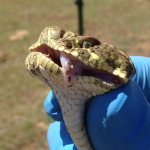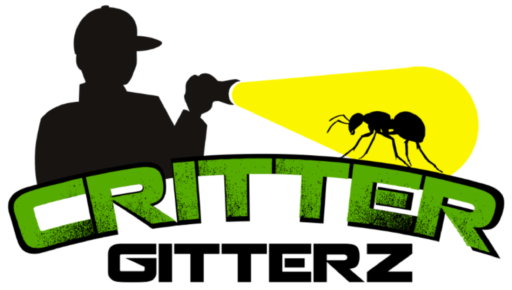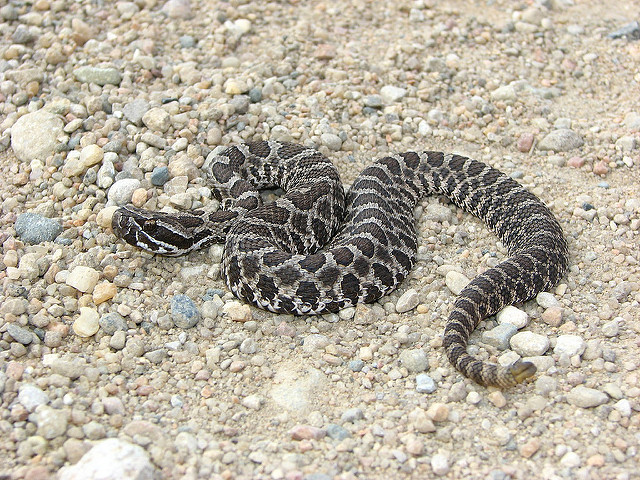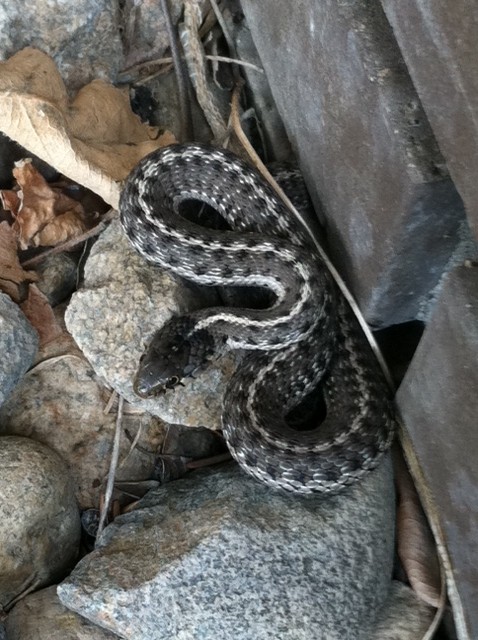Common Colorado Snakes
Garter Snakes are the most common non-venomous snakes in North America and Bull snakes are the largest. Even though These two types of snakes are quite harmless they cause a big problem for those of us that are ophidiophobic or fearful of snakes. If this is a concern for you it may be helpful to know a few things about these critters.
Non-Venomous
Garter Snake
Garter snakes (Thamnophis Sirtalis) are diurnal meaning they are active during the day and can be seen anywhere in Colorado. They prefer however, to live around water sources where a higher abundance of food can be found. Their prey includes but is not limited to earthworms, small birds and fish, rodents, and amphibians.
When they are not out hunting (usually mornings and late afternoons) they sleep in their burrows beneath rocks or concrete. Common predators of the Garters in Colorado consist of hawks, skunks, foxes, other snakes, and even domestic cats.
Bull Snake or Gopher Snake
Bull Snakes or Gopher Snake,(Pituophis catenifer sayi), are smaller in population than Garters but greater in size, averaging 6 feet in length as opposed to 20in in the Garters. Though the Bull snake is usually timid, its larger size allows it to mimic the deadly Rattlesnake in both looks and behavior. The key difference between a Rattlesnake and a Bull snake is that the bull snakes lack a physical rattle despite its ability to mimic the rattle sound. Bull Snakes also have the traditional round pupils and less triangular head than that of a venomous snake.
Bull snakes live in much the same locations that garter snakes do but have a slightly larger prey requirement including: birds, rabbits, ground squirrels, mice, rats, pocket gophers, other snakes and lizards. The breeding season is typically in May and the eggs hatch between August and September.
Our Critter Gitterz technicians understand these concerns and respect the garters’ and Bull snakes’ role in nature as well. This is why we have created a unique method of trapping and relocating without client-snake interaction.
-Venomous Snakes In Colorado-

–Prairie Rattlesnake–Crotalus Viridis–
RATTLESNAKES Of the 19 species of venomous snakes in the U.S., 15 of them are rattlesnakes and only 3 of those are found in Colorado; the Western Rattler or Midget-Faded Rattler, the Prairie rattlesnake and the Massasauga. The Massasauga is found only in the southeastern plains of Colorado. The Western or Midget-Faded Rattler is found along the borders of Colorado and Utah. The Prairie Rattler is found in the Denver metro area and throughout Colorado as a whole. Rattlesnakes are most easily identified by their distinctly triangular head, vertical pupils, a thick and heavy body, and a rattle, or blunt-ended tail. The rattles are very fragile and easily broken off, but if you look at the tip of the tail and see a blunt end, it can only be a rattlesnake. If the tail ends in a sharp point, it is always non-venomous in Colorado.
Western Rattlesnake, Midget-Faded Rattler–Crotalus Oreganus Concolor–
The Midget-Faded Rattler has one of the most potent venoms found in North America (Glenn and Straight, 1977), and according to LD50 studies the venom is many times more potent than that of an Asiatic Cobra. It is characterized by the presence of a presynaptic neurotoxin, referred to as concolor toxin, the amount of which varies in individual snakes, according to Wikipedia.org.
Most rattlesnakes prey includes ground squirrels, prairie dogs, mice, rabbits, other snakes, lizards, and ground- nesting birds. They kill their prey quickly with their venomous bite.
Massasauga Rattlesanke — Sistrurus Catenatus–
It is rare that rattlesnakes bite humans and it usually only happens when they feel mortally threatened. The Prairie Rattlesnake can be seen along the foothills and eastern plains in the Denver metro area. These areas include: bike paths, hiking trails, fence lines, rock walls and even in residential back yards. Keeping a safe distance from the snakes and calling CritterGitterz immediately will reduce the danger you and your pets may encounter.
If you would like us to remove these slithering critters for you give us a call or email us at CritterGitterz@Gmail.com



















